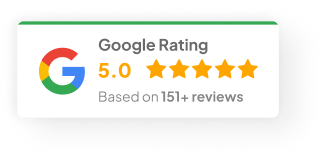03 Oct 25
WordPress Pages vs Custom Post Types: Which One Fits Your Site Best?
When putting together a WordPress site, one of the first big calls is simple on the surface but has a ripple effect everywhere else—do you just stick with Pages and Posts, or do you bring in Custom Post Types (CPTs)?
It sounds like a technical detail, but the choice changes how easy the site is to run, how well it shows up in search, and whether visitors actually convert. And that last one is what matters most.
At Chromatix, this decision has come up again and again over the years. Get it right, and the site feels natural to use. Get it wrong, and even a great-looking design can fall flat.
What Pages Are For
Pages are WordPress at its most straightforward. They’re best for content that doesn’t shift much over time. Stuff like:
- Home
- About Us
- Services
- Contact
- Privacy Policy
They don’t use categories or tags, and you won’t find them in a blog-style feed. Pages make up the backbone of most site navigation.
For small, brochure-style sites, Pages alone usually cover it. They’re simple, uncluttered, and don’t need any special setup.
The Role of Custom Post Types
Now, CPTs take things up a notch. They let you create new “types” of content with fields, filters, and templates designed around what you actually need.
Think of:
- “Properties” for a real estate site
- “Courses” for a university
- “Case Studies” for a digital agency
With CPTs, content can be grouped, searched, filtered, and displayed in archives. Instead of dumping everything into one bucket, you can give it structure. That’s where sites start to feel bigger, cleaner, and more professional.
Pages vs CPTs: A Quick Look
|
Feature |
Pages |
Custom Post Types (CPTs) |
|
Content type |
Static, standalone |
Sets of similar items |
|
Organization |
Basic parent/child hierarchy |
Custom taxonomies, tags, filters |
|
Templates |
Usually shared |
Unique archive and single templates |
|
SEO |
Great for evergreen keywords |
Strong for scalable keyword targeting |
|
Scalability |
Fine for small sites |
Better for growth and structured content |
When Pages Are Enough
Stick with Pages if:
- The content won’t really change
- You don’t need categories, tags, or filters
- The page is essential for navigation
They’re clean, low maintenance, and get the job done for simple sites.
When CPTs Make More Sense
CPTs are the better fit if:
- You’ve got a lot of similar items (products, projects, events, team members)
- Custom fields matter—price, date, client, location, etc.
- Visitors need ways to filter or search
- Long-term growth and SEO are in the plan
Try to manage a portfolio site with only Pages and it gets messy fast. CPTs keep everything tidy and easy to scale.
The SEO and Conversion Angle
How content is structured isn’t just an admin thing—it impacts search and conversions.
- SEO: CPTs let you create content silos that Google actually understands. An “Events” CPT, for example, can be optimized for “Workshops in Melbourne” or “Small Business Events.”
- User Experience: Organized content = faster navigation. People find what they need quicker, bounce less, and stay longer.
- Conversions: Consistency builds trust. A CPT for “Testimonials,” displayed across service pages, helps nudge visitors toward getting in touch.
Here’s the kicker: 94% of first impressions are design-related. Structure is a big part of what makes a site feel well designed.
Common Pitfalls
Some of the missteps businesses run into:
- Forcing everything into Pages and ending up with a tangled backend
- Spinning up a CPT for every tiny thing—too much complexity
- Ignoring SEO for CPT archives, which leads to duplicate content issues
- Designing CPTs that look nice but don’t push users to convert
Balance is key. The structure has to serve the business, not just look tidy in the dashboard.
Chromatix: Why This Matters
Lots of agencies can launch a WordPress site. Chromatix goes deeper, looking at how Pages, Posts, and CPTs can be combined to actually drive results.
The team designs with conversions in mind from the start. Lead forms, checkouts, service inquiries—they’re all built into the flow of the site. Over the years, hundreds of businesses across industries have seen this approach turn their websites into real growth tools.
That’s the difference: not just building a site, but building one that converts.
Wrapping Up
So, Pages or Custom Post Types?
For small, static websites, Pages usually do the trick. For growing businesses that need more structure, CPTs are the smart investment. And honestly, most good websites end up using a mix of both. The trick is knowing where to draw the line.
At the end of the day, it’s not about the tool—it’s about building a website that serves the business goals. That’s exactly what Chromatix is known for.
Want a WordPress site that actually converts visitors into customers? Reach out to the team at Chromatix today.


